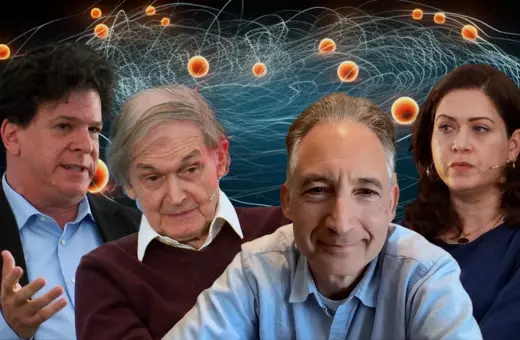The measurement problem in quantum mechanics has challenged physicists and philosophers for almost a century. It has been a focal point of debate in the philosophy of physics, engaging minds from Richard Feynman to Sir Roger Penrose. We now have a plethora of interpretations. Mario Barbatti argues that, while the quantum measurement problem is not completely solved, the proposed solutions are beginning to bear fruit.
At the World Science Festival held this spring, the renowned physicist Brian Greene engaged in a thought-provoking debate with three quantum mechanics specialists, asking about the quantum measurement problem or what happens to a quantum state when it is measured. It was unsettling to see all three proposing entirely distinct answers. Why, a century after the development of quantum mechanics, do we still lack a consensus on its most fundamental process? What do we truly understand about the quantum measurement problem?
In quantum mechanics, all information about a physical system is encoded by the quantum state, a mathematical entity containing contributions from all possible outcomes of a measurement. Consider the ammonia molecule NH3, for example. Its more stable geometry looks like a pyramid, with the three hydrogen atoms forming a triangular base and the nitrogen atom lying either above or below the base. Thus, putting aside molecular vibrations and rotations, the nuclear quantum state of this molecule has two terms corresponding to up and down pyramids. Let us be fancy and name them |up⟩ and |down⟩ states, respectively. The weight or amplitude of each state smoothly changes with time, obeying the Schrödinger equation, the master equation of quantum mechanics.

When we measure the system, we always observe one (and only one) outcome, with a probability that is the square of the corresponding state amplitude at the measurement time. In one instant, we may have a 25% probability of finding |up⟩ and a 75% probability of finding |down⟩. When we single out the outcome value, we say the quantum state collapsed.
This description of the quantum measurement raises three questions. First, what is the outcome basis we must use to write out the quantum state? In my example, I arbitrarily chose to describe it in terms of |up⟩ and |down⟩. However, I could have equally done it in terms of an outcome basis that mixes them (one possibility would be |+⟩ = |up⟩ + |down⟩ and |-⟩ = |up⟩ - |down⟩), and the quantum state would still be the same. Why do we observe certain types of outcomes but not others?
Second, let us take two solutions of the Schrödinger equation, multiply each of them by a constant, and sum these terms. The result, called a superposition, is also a solution. Therefore, nothing prevents the molecule from being in the |+⟩ state, a superposition of |up⟩ and |down⟩ (a molecular dead-alive Schrödinger’s cat). That is not an abstraction. Superpositions exist and have physical effects, such as interference patterns in the classic double-slit experiments. However, we do not usually observe them, especially in large systems, unless we employ exquisite experimental techniques. Why do we not see evidence of superposition everywhere?
Third, how and why does a quantum measurement select a specific outcome? Can the Schrödinger equation and the collapse be unified in a single theoretical framework?
Together, these three questions compose what we call the measurement problem.





















Join the conversation